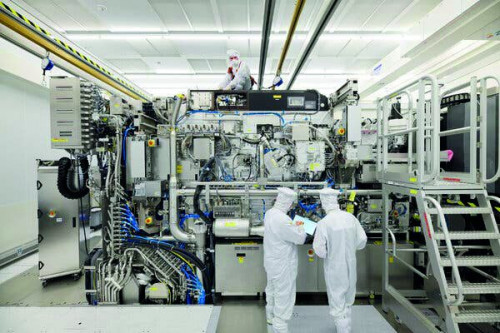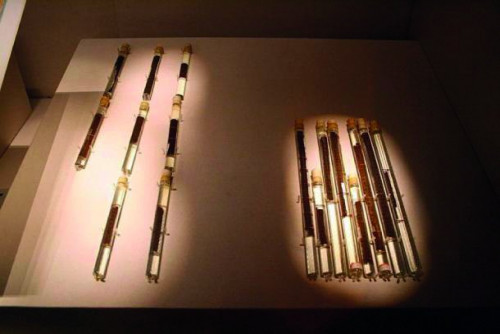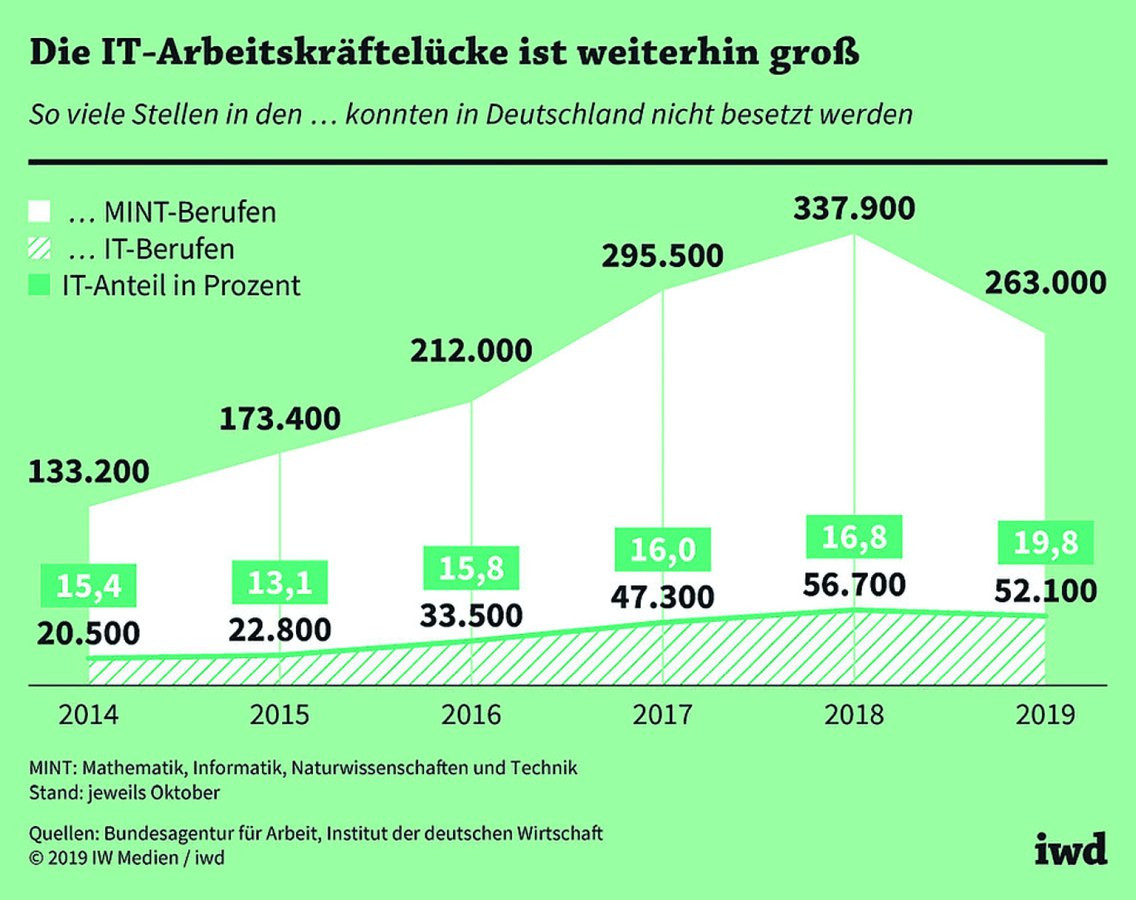If, in accordance with Clausewitz's[2] long outdated rule that war is the continuation of politics by other means, the weapons speak, there are differences between the political behavior of the West and the East: short-term, direct gain seems to be more important on the one hand, long-term strategic effect on the other. Long before Clausewitz, Sun Tzu had already worked out the economics of war and forces.
 Fig. 2: A semiconductor lithography system is manufactured in the NetherlandsTheabove-mentioned West-East difference does not refer to whether we believe we have achieved sufficient objectives once Saddam Hussein or Muammar Gaddafi have been eliminated or whether we first completely raze areas and cities - such as Grozny - to the ground. In terms of electronics in particular, it's about something completely different, as a look at Huawei shows: Following restrictive trade measures by the USA and subsequent reactions by China, the American government took on one of the most successful electronics companies and banned US companies from working with it, which has far-reaching consequences, particularly in the components sector.
Fig. 2: A semiconductor lithography system is manufactured in the NetherlandsTheabove-mentioned West-East difference does not refer to whether we believe we have achieved sufficient objectives once Saddam Hussein or Muammar Gaddafi have been eliminated or whether we first completely raze areas and cities - such as Grozny - to the ground. In terms of electronics in particular, it's about something completely different, as a look at Huawei shows: Following restrictive trade measures by the USA and subsequent reactions by China, the American government took on one of the most successful electronics companies and banned US companies from working with it, which has far-reaching consequences, particularly in the components sector.
This caused damage in the short term. However, far less than hoped for, as Huawei stocked up on critical processors as a precautionary measure - it is currently impossible to predict how successful this will be. However, such bans are generally counterproductive, as they force the opponent to 'research effective countermeasures' - this is where the study of Sun Tzu is illuminating.
Enormous investments are required, both from the industry that is now under pressure and from the respective governments. One example is the 'Made in China 2025' strategy to produce the necessary equipment to manufacture 5 nm chips of equivalent or even better quality than those from Taiwan and South Korea in China. And the USA is taking a similar approach by pumping huge sums of money into this industry because of national security interests - and clearly supported by military interests.
But 5 nm is only a current standard and the IT experts from China and other ASEAN countries know exactly that it is moving in the direction of 3 nm. However, quantum physics properties of current materials prevent a direct step towards 3nm chips. The next breakthroughs may therefore come from other semiconductor materials and technologies. In this respect, China is practically at the same level of research as Taiwan, South Korea and Japan.
The knowledge gap - or communication problem - between Chinese and Taiwanese engineers, for example, which the USA would like to see, does not exist because it is largely a question of money and salaries. In the months in question, some two to three thousand experts moved to the mainland because they are paid far more there, accounting for around ten percent of the relevant Taiwanese IT employees.
 Fig. 3: The Yinqueshan Han strips (found during excavations in 1972) also contain parts of Sun Tzu's Art of War, on display in the Shandong MuseumChina is alsokeeping an eye on South Korea - where, interestingly, some of the best tech minds are Russian. The rapprochement with Russia can also be seen against this backdrop, which is reflected in Huawei's purchase of the Russian facial recognition company Vocord in 2019. After all, Russia is not only known for having the best hackers, but has also been a leader in mathematics, physics and rigorous design work for many years. So what could be more obvious than to look for experts there too?
Fig. 3: The Yinqueshan Han strips (found during excavations in 1972) also contain parts of Sun Tzu's Art of War, on display in the Shandong MuseumChina is alsokeeping an eye on South Korea - where, interestingly, some of the best tech minds are Russian. The rapprochement with Russia can also be seen against this backdrop, which is reflected in Huawei's purchase of the Russian facial recognition company Vocord in 2019. After all, Russia is not only known for having the best hackers, but has also been a leader in mathematics, physics and rigorous design work for many years. So what could be more obvious than to look for experts there too?
The decisive switch from silicon to carbon is approaching - and there are whispers behind closed doors that the laboratory work will soon be ready for industrial production. The critical point here is that the US ban on switching from photolithography to a new non-photolithography process, which allows smaller and cheaper chips to be produced, whereby 'cheap' should be emphasized, means that the problems are piling up in front of Intel and AMD, which are not sitting on their hands either, but will then have to compete against these products on the global market. Reminiscent of Sun Tzu!
Another point of attack, provoked by the US approach, is the development of Huawei's Harmony operating system, which is currently being introduced very cautiously. Quite a few IT experts consider it to be more efficient than Google's Android, partly because it runs on less sophisticated chips. In any case, with the expansion of 5G, most of the work on smartphones can be done by cloud servers and 5G is only a transitional technology.
Finally, there is MS Windows, one of the big money machines in the US. SinceHuawei will focus on making desktop computers and digital displays, they need an operating system that is independent of the US. These desktops will come with a Chinese processor, the Kunpeng 920, and run on a Chinese Unified Operating System (UOS). UOS is a Linux system developed by China's Union Tech and commissioned by Beijing to replace Microsoft Windows. These desktops are not sold to the general public: They will equip China's provincial and national administrations. Not a bad sales market.
You read a lot about the so-called 'race to catch up' and that was certainly the case after the Second World War. Back then, products from Japan, China and Korea were just inferior copies of Western goods. But people there quickly understood that the big money was not to be made with cheap labor but with innovation, inventions and state-of-the-art technology and equipment. Accordingly, it has been observed for some years that government and economic research has been geared towards the future.
In American (and English) terms, this is known as 'leap-frogging', a strategy for outperforming the competition. To succeed, the challenger must have exclusive and ground-breaking knowledge and technology that is superior and better in every way to all conventional competitors, an attitude that is close to Sun Tzu.
 Fig. 4: STEM skills shortage in Germany
Fig. 4: STEM skills shortage in Germany
The foundation is laid in the education system. For example, the World Economic Forum reported that 4.7 million STEM [science, technology, engineering, mathematics] graduates left university in China in 2016 (American: STEM - acronym for science, technology, engineering, mathematics). India, another academic powerhouse, had 2.6 million new STEM graduates last year, while the US educated 568,000. Granted that not everyone will be a Leibnitz or Porsche, but if you accept the fundamental proposition of a Gaussian distribution, the top quarter at 4.7 million is not only much larger but also longer than at 568,000.
Literature:
P. Escobar: China deploys Sun Tzu to prevail in the Chip War, asiatimes; 29.09.2020
R.Zhong: In U.S.-China Tech Feud, Taiwan Feels Heat From Both Sides, New York Times, 01.10.2020
G. Leopold: Foundry Boom Highlights Strategic Chip Technology, EETimes, 10.01.2020
C. Lee: Thousands of Taiwanese chip experts moved to China for better pay: Reports, ZDNet, Dec. 5, 2019
K. Ihara: Taiwan loses 3,000 chip engineers to 'Made in China 2025', Nikkei 3.12.2019
Shu-ren Koo: Russian Brainpower, CommonWealth Magazine (vol. 426); 2009-07-16
https://www.focus.de/politik/deutschland/merkels-handy-abgehoert-der-grosse-betrug-die-usa-verspielen-das-vertrauen-deutschlands_aid_1139006.html
https://orf.at/v2/stories/2203562/
https://www.mbaskool.com/business-concepts/marketing-and-strategy-terms/6895-bypass-attack-leap-frog.html
N. McCarthy: The Countries With The Most STEM Graduates, Forbes, 02.02.2017
STEM professions: Where are the computer scientists?, Der Informationsdienst des Instituts der deutschen Wirtschaft, MINT-Herbstreport 20.11.2019
Chandler: Intel wins second Pentagon deal, Taipei Times (Reuters) - 05.10.2020
References:
[1] Sun Tzu (c. 544-496 BC) historically not really tangible - Chinese general, military strategist and philosopher, best-known work: The Art of War
[2] See also 'Seen differently' PLUS 1/2022, p.92 ff

![If you want to fight, you first have to count the cost [1]](/images/k2/cf9c74e7442ee850336fd5088a11cad3.jpg)
